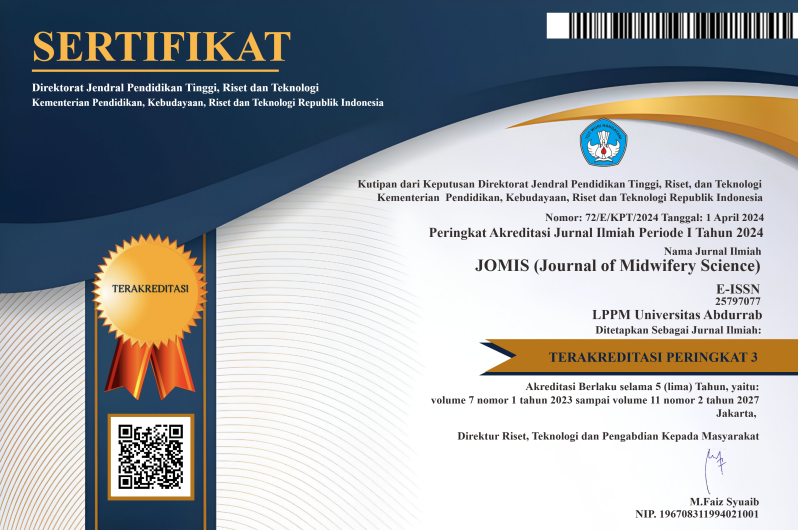PENINGKATAN BREASFEEDING SELF EFFICACY MELALUI EDUKASI TEMAN SEBAYA (PEER EDUCATION)
DOI:
https://doi.org/10.36341/jomis.v7i1.3124Keywords:
Breasfeeding self efficacy, peer educationAbstract
Infants aged 0-6 months who are only given Mother's Milk (ASI), whether drinks, liquids or additional food have never been given, it means that the baby has received exclusive breastfeeding. Various factors cause the low success of exclusive breastfeeding including breastfeeding self-efficacy (BSE). Breastfeeding self-efficacy (BSE) is a person's confidence in breastfeeding, this feeling can increase motivation. Another thing expressed by Breasfeeding self-efficacy (BSE) is related to the perception of the ability to provide breast milk. Handling is needed in increasing this knowledge through peer education. This research method is quasi-experimental with a one group pre-post test approach. The population in this study were third trimester pregnant women. The sampling technique was total sampling. All pregnant women who came to visit the LMT Siregar Clinic in September 2022 were used as research samples, namely 27 people. The purpose of this study was to examine the effectiveness of peer education on increasing BSE mothers. The research location was at the Siregar LMT Clinic during August-November 2022. The results of the study found that there was significant effectiveness in providing peer counseling education (education) to BSE at the Siregar LMT Clinic with a p-value of 0.033 (p-value <0.05). The recommendation in this study is that peers can be empowered in maternal and child health education methods in health services
Downloads
Downloads
Published
Issue
Section
License
1. Copyright of all journal manuscripts is held by the JOMIS : Journal of midwifery scinece
2. Formal legal provisions to access digital articles of electronic journal are subject to the provision of the Creative Commons Attribution-ShareAlike license (CC BY-NC-SA), which means that JOMIS : Journal of midwifery scinece is rightful to keep, transfer media/format, manage in the form of databases, maintain, and publish articles.
3. Published manuscripts both printed and electronic are open access for educational, research, and library purposes. Additionally, the editorial board is not responsible for any violations of copyright law.
licensed under a Creative Commons Attribution-ShareAlike 4.0 International License.









